The Anemoi were Greek wind gods that represented the winds from the cardinal directions. These gods were more than mere personifications of natural forces; they were integral to the Greeks’ understanding of the world around them.
Their influence extended beyond the physical, touching on aspects of agriculture, navigation, and even the divine. The Anemoi’s roles in myth and daily life illustrate the Greeks’ deep connection with nature and their attempt to explain and personify its unpredictable elements.
Boreas: The North Wind
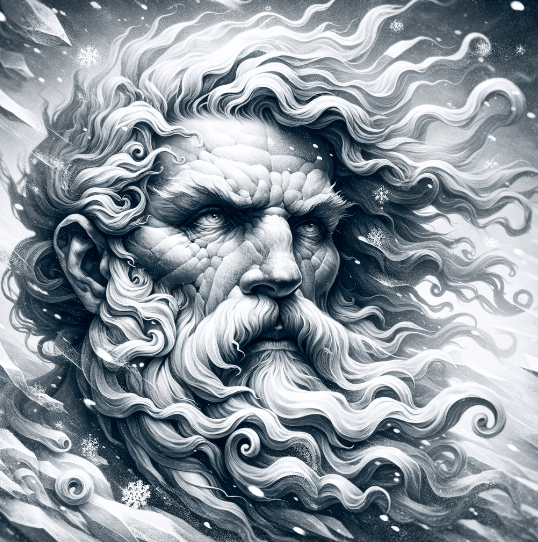
Boreas, the formidable god of the North Wind, was often visualized as a bearded, powerful figure, exuding strength and chill. His arrival was synonymous with the cold breath of winter, sweeping across the land with frost and snow.
In mythology, Boreas’s character was complex; he was both feared and revered. His narrative includes the abduction of Orithyia, an Athenian princess, an act that symbolizes his uncontrollable and tempestuous nature. Upon kidnapping Orithyia, the Greek wind god carried her off to Thrace, where she became his wife and bore him several children, including Chione, Cleopatra, Zetes, and Calais.
Boreas’s role was essential in the natural cycle, with his winds heralding the change of seasons and impacting agriculture and daily life.
Notus: The South Wind
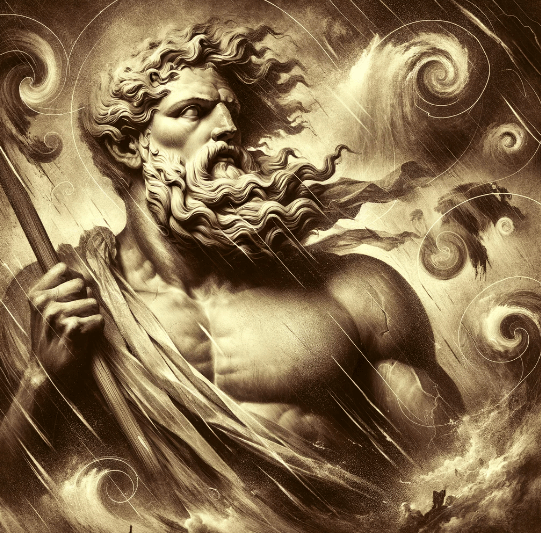
Contrasting Boreas was Notus, the god of the South Wind, associated with the storms and warmth of the late summer and autumn. His presence brought a different type of change, one that was crucial for agriculture but also feared for its potential destruction.
Notus was often depicted as a figure dispensing rain, highlighting his association with the life-giving yet sometimes overwhelming nature of the southern winds.
In the Greek imagination, Notus embodied the dual aspects of nature – its ability to both nurture and ravage, reflecting the volatile balance of the natural world.
Zephyrus: The West Wind
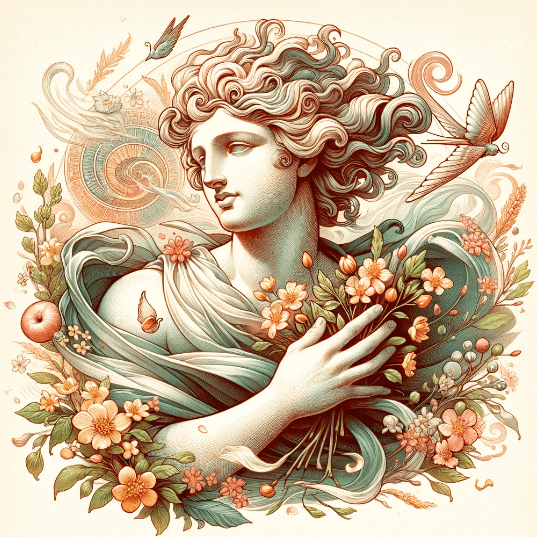
Zephyrus, the god of the West Wind, was seen as the gentlest among the Anemoi. His breezes were welcomed, signaling the arrival of spring and early summer. As a bringer of light and warmth, Zephyrus was often depicted as a handsome, youthful figure, symbolizing his beneficial and nurturing qualities. He was associated with growth, fertility, and the blooming of plants.
In myths, Zephyrus’s gentler side was highlighted in his romance with the nymph Chloris, whom he transformed into Flora, the goddess of flowers, showcasing his vital role in the cycles of growth and renewal.
He is also remembered for his tragic love story with Hyacinthus. According to mythology, Zephyrus was deeply in love with the beautiful Spartan prince Hyacinthus. However, Hyacinthus favored the god Apollo, which aroused Zephyrus’s jealousy. In a tragic turn of events, Zephyrus’s jealousy led to Hyacinthus’s death, as he manipulated the path of a discus thrown by Apollo, causing it to fatally strike Hyacinthus. This tragic tale is often interpreted as a reflection of the delicate balance between love and jealousy, and the sometimes-destructive nature of desire.
Eurus: The East Wind

Eurus, the god of the East Wind, is somewhat of an enigmatic figure in Greek mythology. Representing the wind coming from the eastern horizon, he was associated with the warmth and rain that his breezes brought.
Unlike his brothers, Eurus’s portrayal in Greek art and literature is less frequent and less defined, making him a more mysterious character. However, his presence was still crucial in maintaining the balance of the winds and, by extension, the balance of the natural world as understood by the Greeks.
Aeolus: The Keeper of the Winds
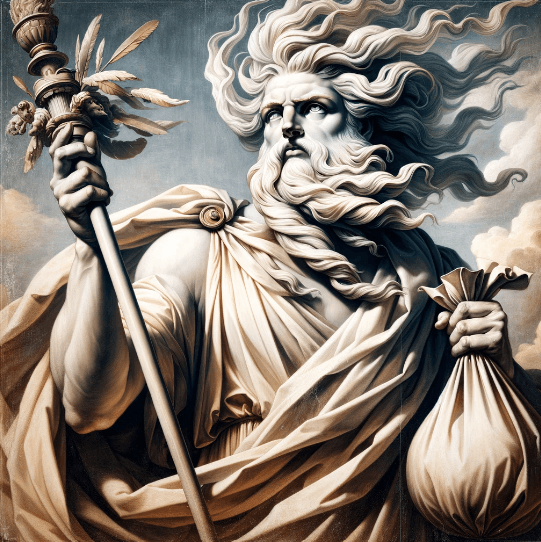
Central to the narratives of the Anemoi is Aeolus, the Keeper of the Winds. He held a unique position, possessing the power to control and contain the winds.
Aeolus’s role as a mediator between the gods and the natural world is exemplified in Homer’s ‘Odyssey,’ where he assists Odysseus by providing a bag containing all the winds. This story highlights Aeolus’s significance but also reflects the ancient Greeks’ attempts to understand and explain the unpredictable nature of the winds.
Aeolus was the son of King Hippotes, and he resided on the island of Aeolia, a mythical island which has since been purported to be to the north of Sicily.
Appearances of the Anemoi in Greek Mythology
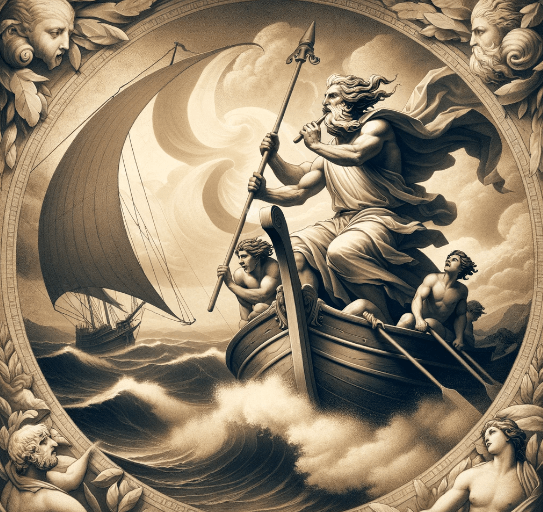
The Anemoi feature prominently in various myths and legends. One of the most notable appearances of the wind gods is in Homer’s epic, the “Odyssey.” In this tale, Aeolus, the Keeper of the Winds, plays a crucial role by giving Odysseus a leather bag containing all the winds to aid his journey home. This act highlights the control and influence Aeolus and the Anemoi had over the natural world and human fate.
Boreas, the North Wind, makes a notable appearance in the myth of the Golden Fleece. He assists the Argonauts on their journey by providing favorable winds, illustrating a power to aid or hinder voyages. As previously mentioned, Boreas is also famously known for abducting Orithyia, an Athenian princess, which further emphasizes his raw power and tempestuous nature.
Zephyrus, the West Wind, is fondly remembered in the story of his love affair with the nymph Chloris, whom he transformed into Flora, the goddess of flowers. This myth underlines Zephyrus’s role as a harbinger of spring and a symbol of life and renewal.
Notus and Eurus, though less frequently mentioned in myths compared to Boreas and Zephyrus, were nonetheless integral to the Greek understanding of the winds. They were often invoked in context with the seasons they represented and the changes they brought to the climate and environment.
Artistic Depictions and Symbolism of the Anemoi
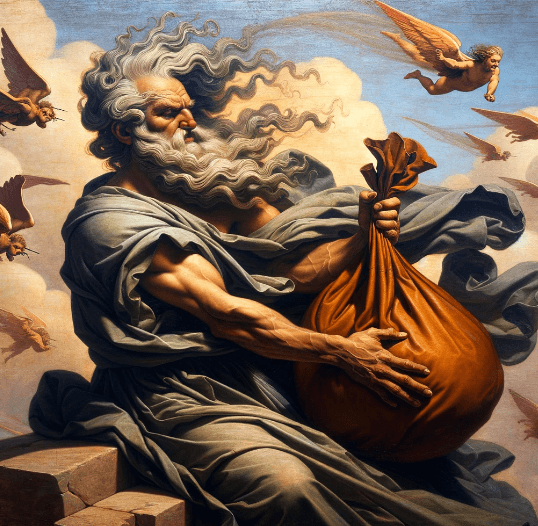
In Greek art, each of the Anemoi was depicted with distinct characteristics that mirrored their respective attributes.
Boreas, with his muscular, bearded form, symbolized the harshness of winter, while the youthful, winged Zephyrus represented the gentle nature of spring breezes. Notus and Eurus, though less frequently depicted, were nonetheless integral to this artistic tradition, each embodying the unique aspects of their directional winds.
These depictions were not mere artistic expressions but were imbued with symbolic meanings, reflecting the Greeks’ reverence for and attempts to understand the forces of nature.
Get in Touch
Thank you for reading our article about the Anemoi, the wind gods of Greek mythology. We hope this exploration into the realm of the winds and their divine guardians has been both enlightening and entertaining. If this journey through the skies of ancient Greece has piqued your interest, you might also enjoy learning about the Furies.
For further inquiries or to delve deeper into the world of myths and legends, please don’t hesitate to contact me at richard@mythologyplanet.com, or share your thoughts and questions in the comment section below.
For a more visual experience of the Anemoi and their mythological narratives, check out this YouTube video by 2-minute Mythology.
